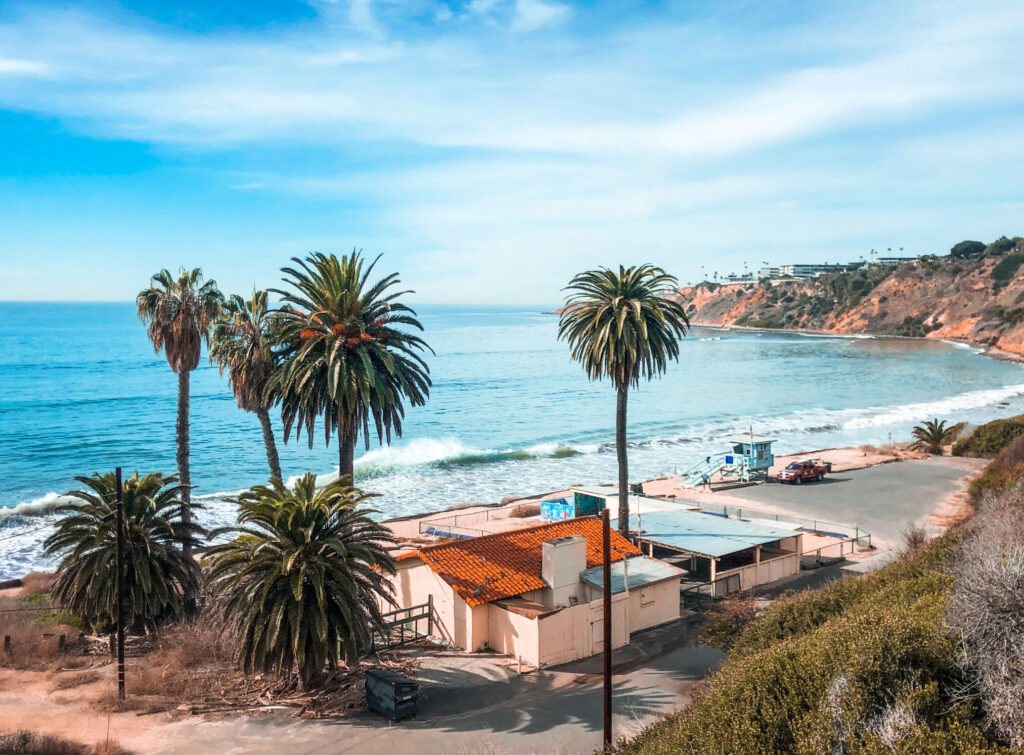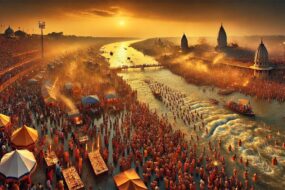- Home
- Culture & Community
- Tourism
- The Konark Sun Temple – ...
“सूर्याय नमः, दिवाकराय च तेजसे।
वन्दे कोणार्कं, धरण्या: तेजोमयं विभोः॥”
“Sūryāya namaḥ, divākarāya ca tejase.
Vande Konārkam, dharaṇyāḥ tejomayaṃ vibhoḥ.”
“Salutations to the Sun, the giver of light and energy.
I bow to the Konark, the radiant embodiment of the Earth’s brilliance.”

The Konark Sun Temple, located on the eastern coast of India in Odisha, stands as one of the greatest architectural, scientific, and cultural wonders of ancient India. Constructed in the 13th century by King Narasimhadeva I of the Eastern Ganga Dynasty, this magnificent temple is dedicated to Surya, the Sun God, and is recognized for its grandeur and unique design. European sailors often referred to it as the “Black Pagoda” due to its dark color and towering structure.
More than just a religious monument, the Konark Sun Temple is a testament to India’s advanced knowledge of astronomy, magnetism, and architecture. Many believe that, had the temple survived in its entirety, it would have easily ranked among the Wonders of the World for its complex design and scientific significance.
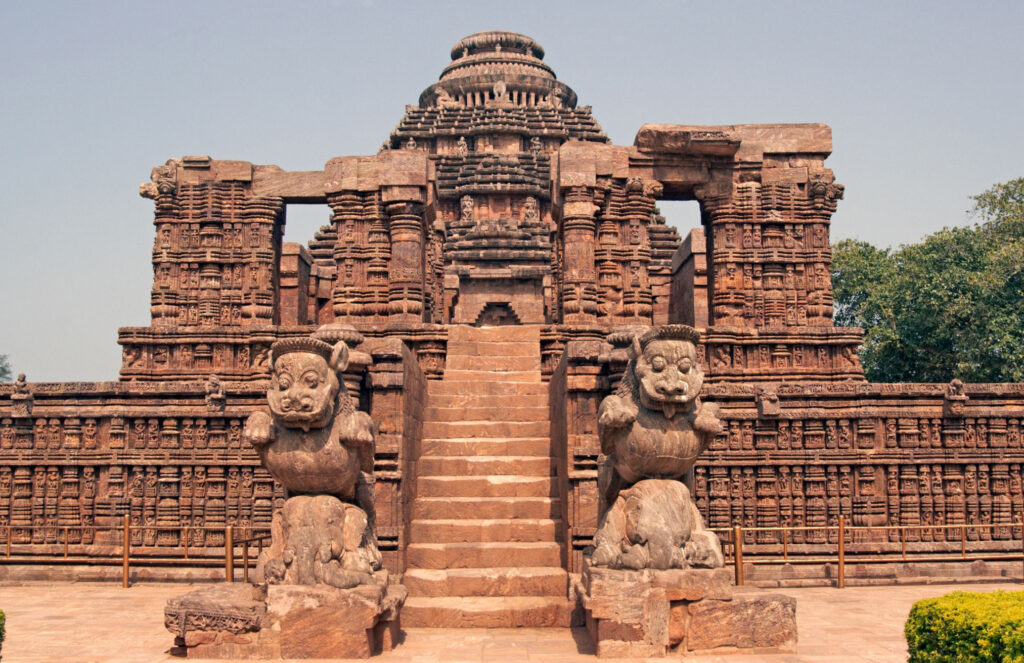
History and Ancient Importance
Built around 1250 AD, the temple’s construction took around 12 years and involved nearly 1,200 artisans. King Narasimhadeva I commissioned it to celebrate his dynasty’s victory and to symbolize India’s devotion to Surya. The temple’s design is extraordinary—shaped like a massive chariot with 12 pairs of intricately carved wheels, representing the 12 months of the year. Each of these wheels symbolizes the passage of time, with the movement of the Sun across the sky mirrored by the seven stone-carved horses pulling the chariot.
At the center of this chariot was a giant idol of the Sun God, said to levitate due to the temple’s remarkable use of magnetic technology.
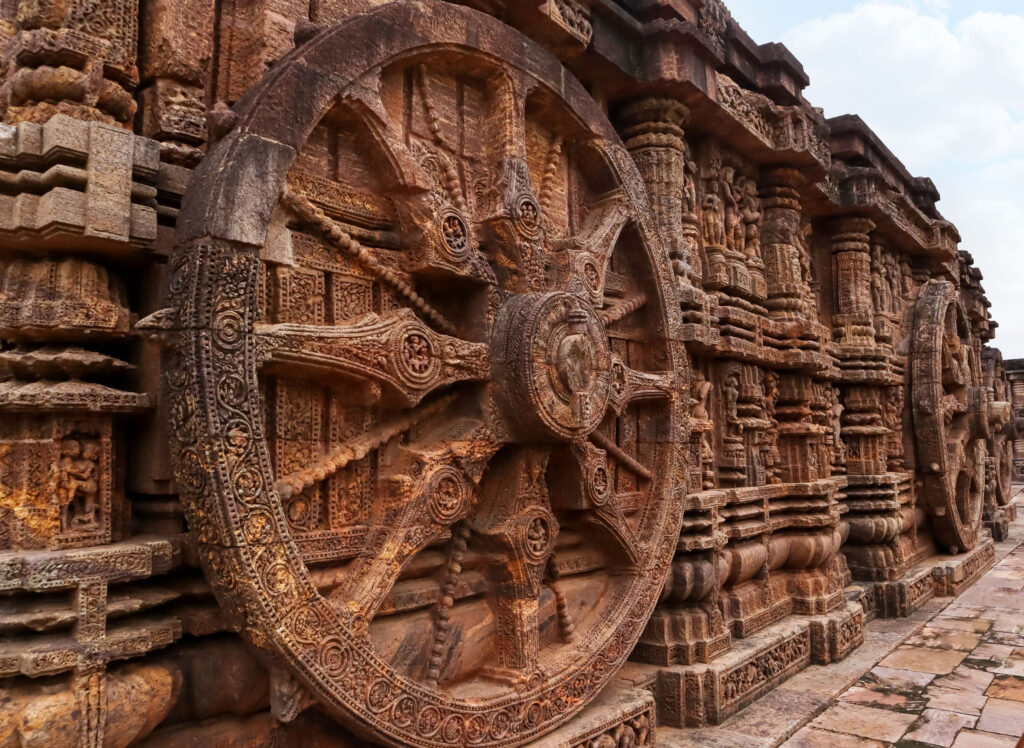
Sundial in Stone: Time Before Watches
The wheels of the chariot at the Konark Sun Temple serve a dual purpose. Crafted with precision, these 24 wheels function as sundials. Each wheel has eight spokes, representing 24 hours, and the shadow cast by these spokes allows accurate timekeeping when touched by the sun’s rays. Before watches, this ingenious method was the ancient way of telling time. Each spoke corresponds to a pahar, a three-hour time interval, showcasing the advanced understanding of astronomy by the temple’s architects.
Magnetic Fields and Foreign Scientists’ Theories
The magnetic field within the temple is one of its most fascinating aspects. According to historical accounts, the temple’s peak housed a massive magnetic lodestone, which, along with other strategically placed magnets, created a powerful magnetic field. This field was believed to cause the Sun God’s idol to levitate in the main sanctum, attracting considerable attention from historians and researchers.
In the early 19th century, foreign scholars such as William Jones and James Fergusson documented the mysterious magnetic phenomena at Konark. Their research suggested that the lodestone might have interfered with maritime navigation, causing compass malfunctions for sailors off the coast of Odisha. Some theories propose that the knowledge of Vedic science and ancient Indian understanding of magnetism, as described in texts like the Rigveda, influenced the construction techniques used at Konark.
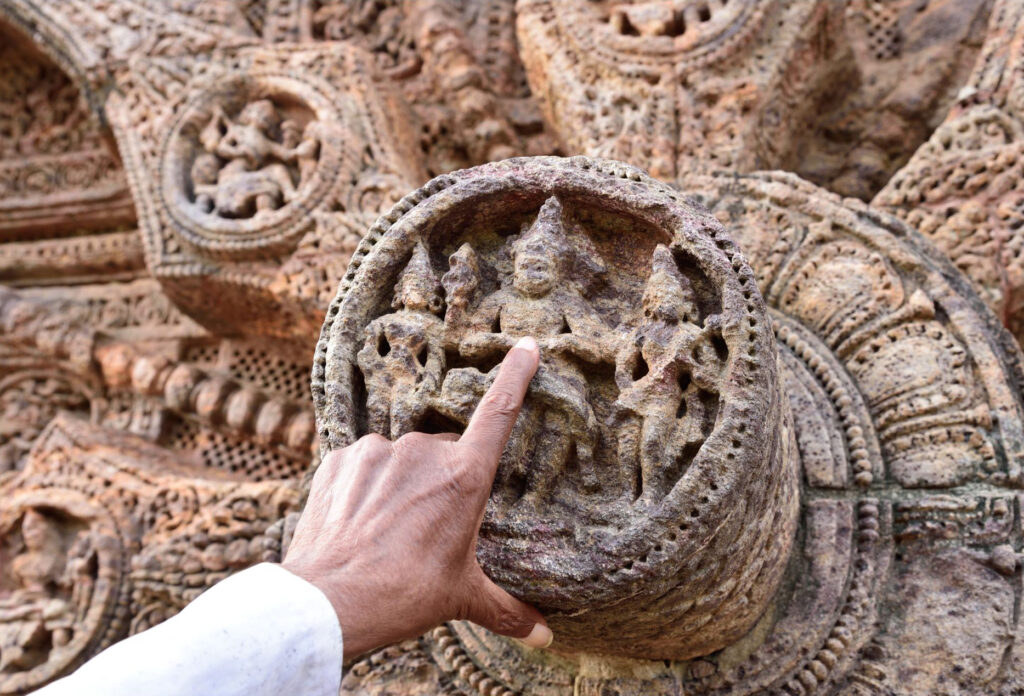
Architectural Marvel and Symbolism in Stone
The Konark Sun Temple is not only an engineering marvel but also a masterpiece of symbolic design. Each of its 24 wheels serves as both a decorative feature and an astronomical calculator. These wheels, in particular, can calculate time accurately to the minute, acting as functional sundials.
Moreover, the temple’s design reflects the celestial chariot of Surya, drawn by seven horses. The seven horses symbolize:
- Seven colors of sunlight (violet, indigo, blue, green, yellow, orange, and red), visible in a rainbow.
- Seven days of the week, emphasizing the cyclical nature of time.
- Seven chakras (energy centers) in the human body, representing the flow of energy sustained by the Sun.
Symbolism in Stone: The Lion, Elephant, and Man Sculptures
Positioned outside the temple are two identical sculptures depicting powerful symbolic imagery. In these, a lion is shown crushing an elephant, and beneath the elephant, a man is being crushed. This illustration captures a universal theme about the struggles of individuals in their pursuit of wealth and power, providing deep philosophical meaning.
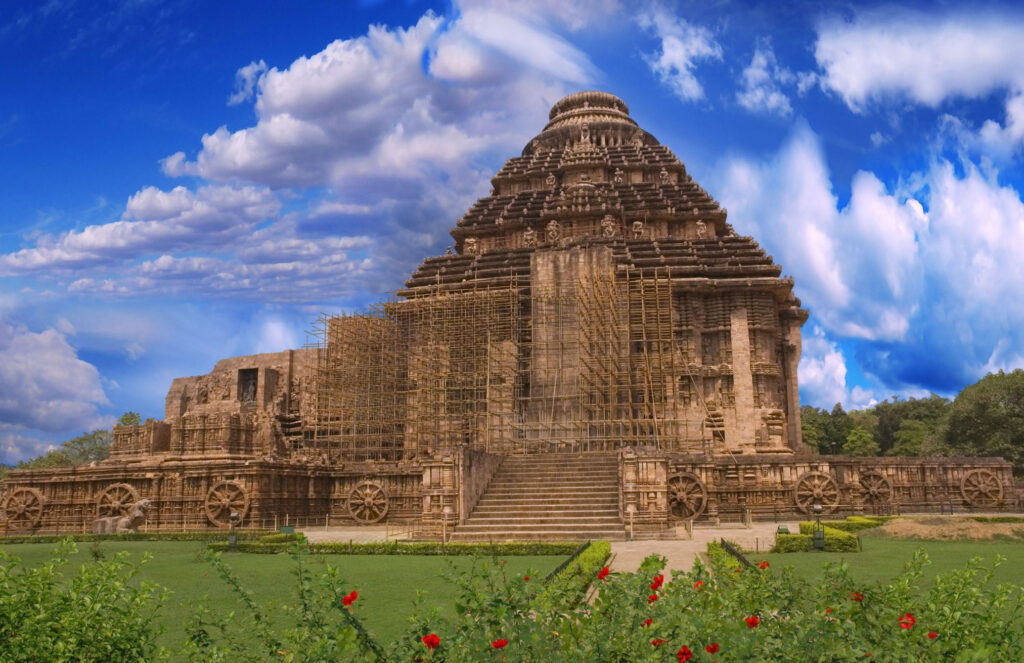
The Demolition: When and Why?
The destruction of the Konark Sun Temple remains a subject of debate. Historical records suggest the temple was attacked multiple times, primarily by Muslim invaders in the 15th and 17th centuries. The Portuguese are also believed to have removed the magnetic lodestone from the temple’s peak, allegedly because it interfered with their navigational instruments. The removal of this stone caused a structural imbalance, eventually leading to the collapse of the main sanctum (Vimana).
Additionally, natural factors such as sea winds, cyclones, and poor maintenance contributed to the temple’s degradation. The loss of the Konark Sun Temple is often seen as a global tragedy, given its unique scientific and architectural significance.
Ancient Indian Knowledge and the World’s Loss
The destruction of the Konark Sun Temple deprived the world of a deeper understanding of ancient Indian science. The temple was a repository of Vedic knowledge, showcasing India’s advanced understanding of astronomy, magnetism, and architecture. Its intricate design and scientific innovations were far ahead of their time.
Vedic texts, such as the Rigveda and Yajurveda, contain references to the importance of the Sun and solar energy. The Konark Sun Temple, constructed based on this deep cosmological knowledge, was not just a place of worship but a center for the study of the universe and its celestial movements.
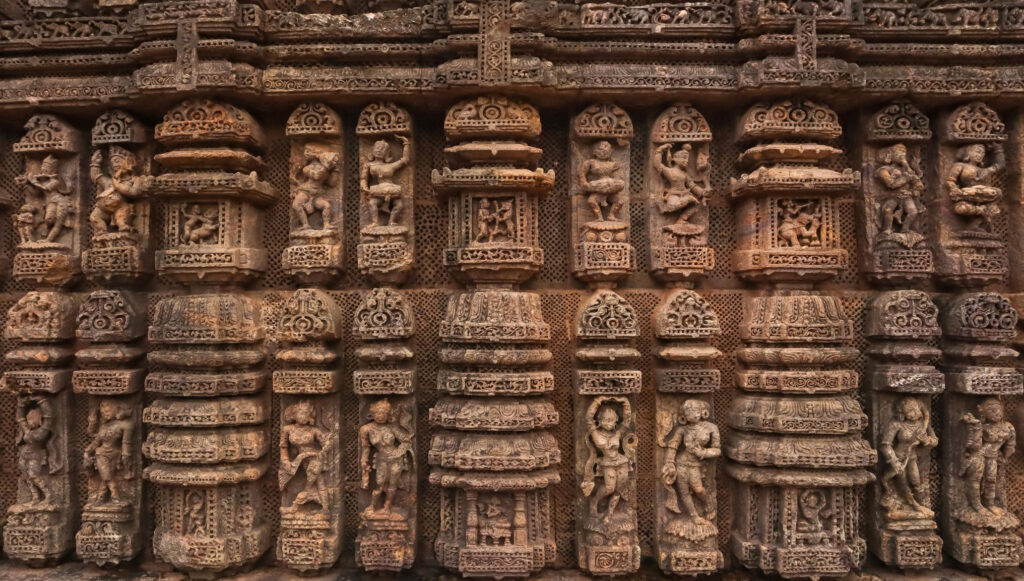
Global Recognition: Konark as a World Wonder
The Konark Sun Temple, with its blend of science, spirituality, and art, deserves to be recognized as one of the Wonders of the World. Its unique use of magnetic technology and astronomical accuracy demonstrate the brilliance of ancient Indian science. The temple stands as a testament to India’s innovative spirit and cultural heritage, which should be celebrated globally.
ASI Reports and Restoration Efforts
The Archaeological Survey of India (ASI) has undertaken significant efforts to preserve the remaining parts of the temple. Their reports describe ongoing restoration work, including the strengthening of the foundation and the preservation of the intricate stone carvings. Although much of the original structure has been lost, the ASI continues its work to ensure that the legacy of Konark endures.
Real Experiences and Reflections
In recent years, the Konark Sun Temple has garnered renewed attention through social media and global platforms. Travel bloggers, historians, and tourists frequently share their experiences on platforms like Instagram and YouTube, with hashtags like #AncientWonders and #SunTemple. Many describe the surreal experience of witnessing the temple at sunrise, when the first rays of light touch the stone wheels.
Notable historians like William Dalrymple have praised the temple’s architectural complexity, while scientists like Subhash Kak have discussed its significance as a Vedic center for astronomical knowledge. These reflections highlight the temple’s enduring relevance and the necessity of preserving its legacy.
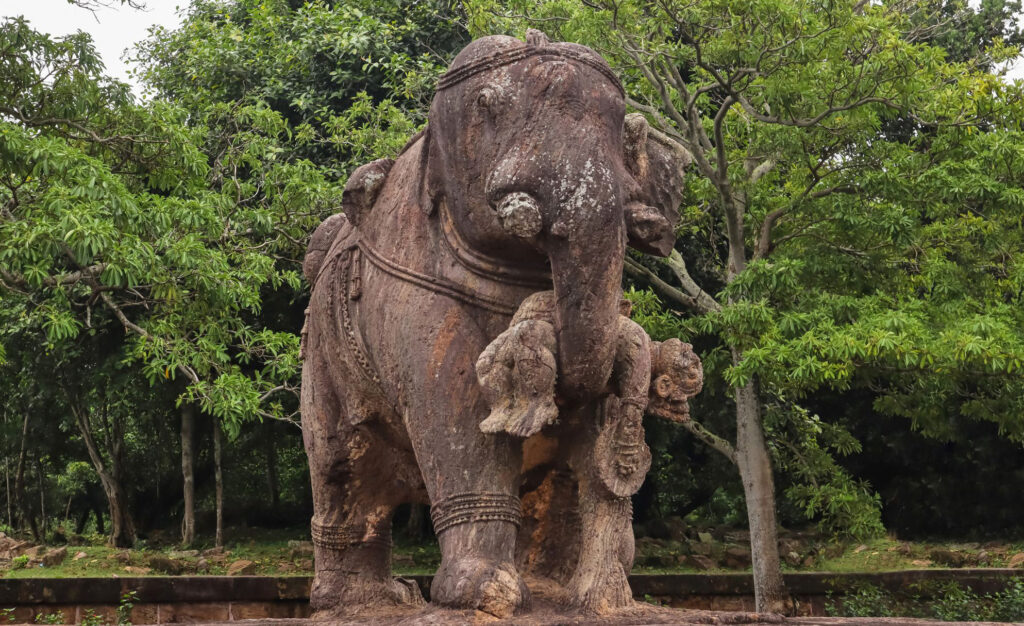
Author’s Thought:
This article offers a glimpse into the rich legacy of the Konark Sun Temple, drawing from historical records, Vedic literature, and evolving interpretations. Some aspects—such as theories around magnetic structures and a levitating idol—belong to the realm of legend and oral tradition, and may not be fully verified by modern research. The intention here is to honor both the documented history and the cultural narratives that have surrounded the temple for centuries. Readers are encouraged to view this as an invitation to explore further, reflect deeper, and engage with the enduring mystery and magnificence of Konark.
Sources and References:
- Indian Architecture: Hindu and Buddhist Periods: by Percy Brown – Insights on Konark’s architectural significance.
- ASI Reports on Konark Sun Temple: Findings and restoration efforts by the Archaeological Survey of India.
- “Ancient Indian Astronomy” by B.V. Subbarayappa – On the astronomical knowledge and significance of Konark.
- William Jones and James Fergusson – Historical accounts documenting the magnetic phenomena of the temple.
- Vedic Scriptures: Rigveda and Yajurveda – References to cosmological knowledge in ancient Indian texts.
How to Reach the Konark Sun Temple: Location and Surroundings
The Konark Sun Temple is located in the Puri district of Odisha, India. It is situated approximately 35 kilometers northeast of Puri and about 65 kilometers from Bhubaneswar, the capital city of Odisha. The temple is positioned near the Bay of Bengal, which adds to its picturesque and spiritual significance.
How to Reach Konark Sun Temple:
- By Air:
- The nearest airport is in Bhubaneswar (Biju Patnaik International Airport), which is about 65 kilometers away from the temple. From the airport, visitors can hire taxis or take buses to reach Konark.
- By Train:
- The nearest major railway station is in Puri, located around 35 kilometers from Konark. Puri is well-connected by trains from various parts of India. From Puri, you can hire a taxi, take a bus, or rent a bike to reach the temple.
- By Road:
- Konark is easily accessible by road from Puri, Bhubaneswar, and other nearby cities. Government and private buses frequently operate between Puri and Konark, and the journey takes around 1 to 1.5 hours by road. Taxis and private vehicles can also be hired for more convenient travel. Taxis and private vehicles : can also be hired for more convenient travel.
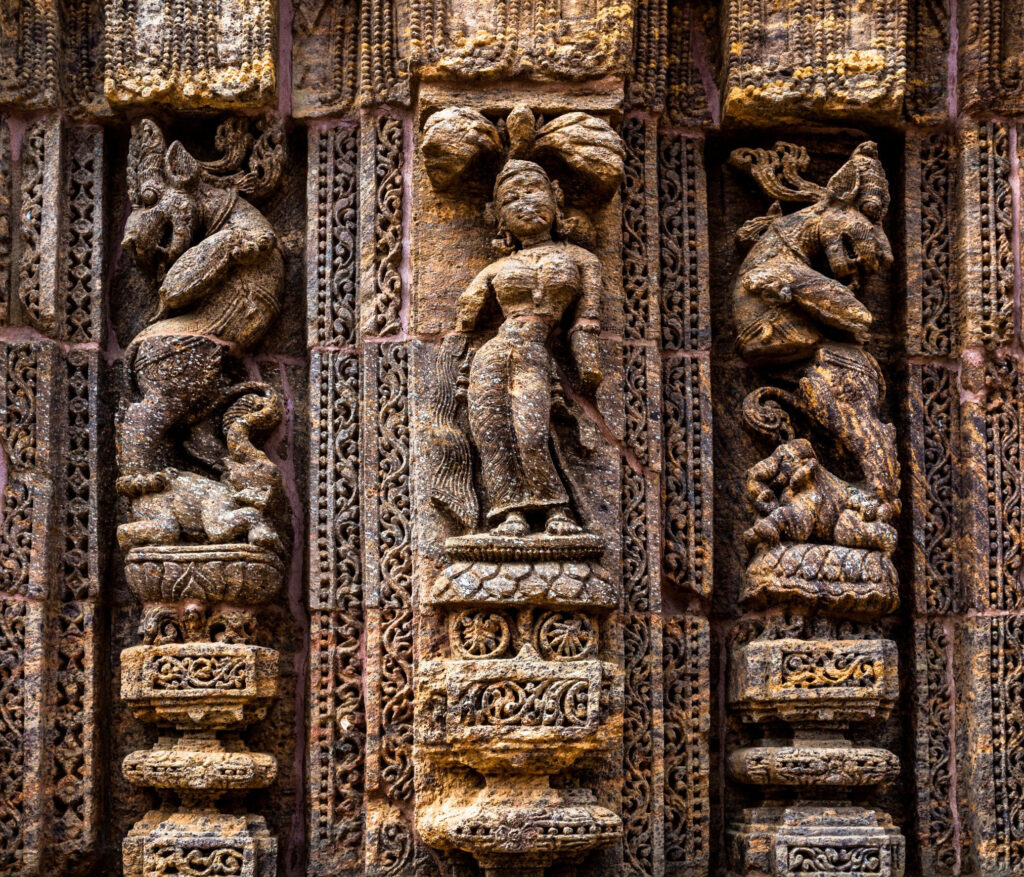
What’s Around the Konark Sun Temple?
- Chandrabhaga Beach: Just 3 kilometers from the Sun Temple, Chandrabhaga Beach is a serene and clean beach known for its spectacular sunrise views. Pilgrims and tourists often visit this beach after their temple visit, as it is also considered sacred in local traditions.
- Konark Museum: Located near the temple, the Konark Archaeological Museum is managed by the Archaeological Survey of India (ASI). The museum houses many sculptures and artifacts recovered from the temple complex, offering visitors insight into the rich history and craftsmanship of the site.
- Ramachandi Temple: Approximately 8 kilometers from the Sun Temple, the Ramachandi Temple is another important religious site dedicated to Goddess Ramachandi, situated near the river Kushabhadra. It is a peaceful spot where visitors can experience Odisha’s spiritual and natural beauty.
- Puri Jagannath Temple: While in the region, a visit to the famous Jagannath Temple in Puri is highly recommended. This temple, one of the Char Dham pilgrimage sites, is just 35 kilometers from Konark and is renowned for its religious significance and annual Rath Yatra festival.
